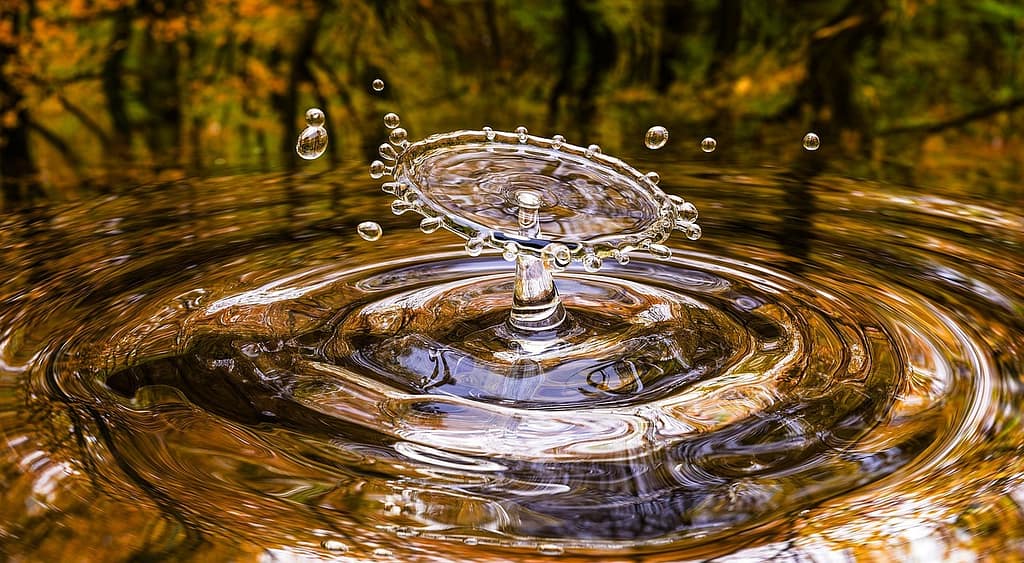In our fast-paced world, staying adequately hydrated is a cornerstone of maintaining optimal health. But with a plethora of options lining grocery store shelves, choosing the right type of drinking water can feel overwhelming. Spring water and purified water reign supreme among bottled water choices, each boasting unique characteristics and sparking debates about their health benefits. This comprehensive guide delves into the world of bottled water, meticulously dissecting the properties, advantages, and potential drawbacks of both spring water and purified water, empowering you to make an informed decision tailored to your specific needs.
Spring Water: A Natural Elixir from the Earth’s Core
Unveiling the Essence of Spring Water
Spring water, as the name suggests, originates from an underground source that naturally bubbles forth to the earth’s surface. This pristine water emerges from an aquifer, a geological formation consisting of rock or sand saturated with groundwater. To qualify as spring water, the source must be meticulously protected from surface water contamination and maintain a consistent, uninterrupted flow. Spring water is bottled at the source and may contain a delightful medley of naturally occurring minerals, including calcium, magnesium, and potassium.

Unveiling the Benefits of Spring Water: A Symphony of Health
- A Treasure Trove of Minerals: Spring water boasts a natural mineral content that can contribute significantly to a well-balanced diet. Minerals like calcium and magnesium play a vital role in maintaining strong bones, ensuring proper muscle function, and facilitating efficient nerve transmission [1]. Studies have shown that adequate calcium intake can help prevent osteoporosis, a condition characterized by bone weakening and increased fracture risk [5]. Magnesium deficiency has been linked to muscle cramps, headaches, and even heart rhythm disturbances [6]. Spring water, with its natural presence of these minerals, can contribute to a healthy lifestyle.
- A Taste Sensation: Many individuals favor the taste of spring water due to the subtle presence of minerals. Compared to purified water, spring water can be perceived as more refreshing and flavorful. The specific taste profile can vary depending on the mineral composition of the source, offering a unique and enjoyable drinking experience.
- Electrolyte Powerhouse: Spring water naturally contains electrolytes, including sodium and potassium. Electrolytes are crucial for maintaining proper hydration, especially for athletes or individuals with active lifestyles, as they aid in regulating fluid balance and muscle function [2]. During exercise, electrolytes are lost through sweat. Replenishing electrolytes with spring water can help prevent dehydration and muscle cramps, allowing you to perform at your best.
Potential Concerns Regarding Spring Water: A Balanced Perspective
- Mineral Fluctuation: The mineral content of spring water can vary depending on the source. This fluctuation might not be ideal for individuals with specific dietary needs or those on a restricted mineral intake, such as those with kidney disease. Consulting a healthcare professional can help determine if spring water is suitable for your individual needs.
- A Faint Threat of Contamination: Although spring water sources are rigorously protected, there’s a slight possibility of contamination from surrounding environments. However, regulations and quality control measures significantly minimize this risk. Choosing spring water from reputable brands with certifications from trusted organizations like the National Sanitation Foundation (NSF) can provide additional peace of mind.
- Microplastics: A Looming Concern: Microplastic contamination is an emerging environmental concern plaguing bottled water, including spring water [3]. While research is ongoing, choosing reputable brands with stringent filtration processes can help mitigate this risk. Additionally, considering reusable water bottles can significantly reduce plastic waste.
Purified Water: The Essence of Purity
Unveiling the Production Process of Purified Water
Unlike spring water, purified water can originate from various sources, including tap water, lakes, or rivers. However, it undergoes a meticulous purification process designed to remove impurities, contaminants, and even minerals. Common purification methods employed include distillation, reverse osmosis, and deionization. Distillation involves boiling water to vapor, leaving contaminants behind. Reverse osmosis utilizes a semi-permeable membrane that allows water molecules to pass through while filtering out impurities. Deionization utilizes charged resins to remove dissolved salts and minerals. Through these processes, purified water is essentially stripped down to its most basic components – hydrogen and oxygen molecules.

Unveiling the Benefits of Purified Water: A Champion of Consistency
- Purity and Consistency Personified: Purified water offers a consistent level of purity, free from contaminants, bacteria, and minerals. This unwavering consistency makes it a preferred choice for individuals with compromised immune systems or those on specific diets requiring strict control over mineral intake.
For individuals with compromised immune systems, purified water’s lack of contaminants and bacteria minimizes the risk of infection. This is especially important for those undergoing medical treatments that weaken the immune system or for people with chronic illnesses.
For individuals on specific diets requiring strict mineral intake control, purified water allows for precise control over mineral consumption. This can be beneficial for those managing conditions like kidney disease, where potassium intake needs to be limited. By consuming purified water, they can ensure they meet their hydration needs without exceeding their mineral restrictions.
- A Neutral Canvas for Taste: Due to the absence of minerals, purified water boasts a neutral taste, making it a versatile option for consumption or use in cooking. It doesn’t impart any flavor to food or beverages, allowing the natural flavors to shine through. This can be particularly advantageous for people who find the taste of spring water unappealing or for preparing recipes where a neutral base is desired.
- Wide Availability and Affordability: Purified water is readily available in most grocery stores and often comes at a more affordable price point compared to spring water. This widespread availability makes it a convenient and budget-friendly choice for many consumers.
Considerations and Controversies Surrounding Purified Water: A Critical Look
- Mineral Depletion: A Cause for Concern?: The purification process, while effective in eliminating harmful contaminants, also removes beneficial minerals. Some argue that consistent consumption of mineral-depleted water can lead to mineral deficiencies [4]. However, it’s important to note that most healthy individuals can obtain sufficient minerals through a balanced diet rich in fruits, vegetables, and whole grains. Additionally, some studies suggest that the human body can adapt to low-mineral water by increasing mineral absorption from other dietary sources [7].
- Environmental Impact: The Price of Convenience: The plastic used in bottled water, including purified water, raises environmental concerns regarding plastic waste and production. Choosing reusable water bottles and opting for larger containers can help minimize the environmental impact. Additionally, supporting brands that utilize recycled plastic or invest in sustainable packaging initiatives can be a responsible choice.
- Taste Preference: A Matter of Personal Choice: Some people find purified water bland due to the lack of minerals. This can be subjective, and taste preferences can vary greatly. If you find purified water unappealing on its own, consider adding a slice of lemon, cucumber, or other fruits for a hint of natural flavor.
The Importance of Staying Hydrated
Regardless of the water type you choose, staying adequately hydrated is crucial for maintaining optimal health. Here’s why:
- Regulates Body Temperature: Water plays a vital role in regulating body temperature. Through sweating, the body releases excess heat, and proper hydration ensures efficient sweating to maintain a healthy internal temperature.
- Lubricates Joints: Water acts as a lubricant for joints, facilitating smooth movement and reducing the risk of friction and pain.
- Aids Digestion: Water is essential for proper digestion and helps break down food particles for efficient nutrient absorption.
- Boosts Cognitive Function: Dehydration can impair cognitive function, leading to decreased focus, memory problems, and fatigue. Staying hydrated ensures optimal brain function and mental clarity.
- Supports Overall Health: Adequate hydration contributes to various bodily functions, including kidney function, waste elimination, and nutrient transport.

Conclusion: Selecting Your Hydration Ally
Both spring water and purified water are safe and healthy options for hydration. Choosing the ideal choice hinges on your individual needs and preferences. Here’s a breakdown to help you navigate this decision:
Spring Water:
- Ideal for: Individuals seeking a natural source of hydration with a refreshing taste and a boost of minerals.
- Considerations: Potential for mineral fluctuation, slight contamination risk, and presence of microplastics (choose reputable brands).
Purified Water:
- Ideal for: Individuals with compromised immune systems, those on specific mineral-restricted diets, or those who prefer a neutral-tasting water.
- Considerations: Lack of minerals (obtain minerals from diet), environmental impact of plastic bottles (use reusable bottles), and potential for a bland taste.
Additional Factors to Consider:
- Cost: Spring water is generally more expensive than purified water.
- Environmental Impact: Consider using a reusable water bottle to minimize plastic waste, regardless of the water type you choose.
- Local Regulations: Regulations surrounding spring water bottling can vary by region. Look for certifications from reputable organizations to ensure quality and safety.
Beyond Bottled Water: Exploring Other Options
While bottled water offers convenience, it’s important to acknowledge the environmental impact of plastic production and disposal. Here are some sustainable alternatives to consider:
- Tap Water: Tap water in many developed countries is rigorously treated and safe for consumption. Consider using a home water filter for added peace of mind.
- Filtered Water: Invest in a reusable water bottle with a built-in filter to enjoy filtered water on the go. Many filtration options are available, such as carbon filters that remove chlorine and improve taste, or reverse osmosis filters that remove a broader range of contaminants.
- Water Dispensers: Refill your reusable water bottle at water dispensers in offices or public spaces. This is a convenient and cost-effective way to stay hydrated while minimizing plastic waste.
Ultimately, the best drinking water is the one you’ll consistently consume throughout the day. Adequate hydration is crucial for maintaining good health, and selecting a water option you enjoy will encourage you to drink more. Remember, staying informed and making conscious choices empowers you to prioritize both your health and the environment.
Additional Tips for Staying Hydrated:
- Carry a reusable water bottle: Keep a reusable water bottle with you throughout the day to ensure easy access to water. Choose a bottle that you find appealing and convenient to carry.
- Set reminders: Set reminders on your phone or use a hydration app to remind yourself to drink water throughout the day.
- Infuse your water: Add slices of lemon, cucumber, ginger, or other fruits and herbs to your water for a touch of natural flavor. This can make plain water more appealing and encourage you to drink more.
- Monitor your urine color: Your urine color can be a good indicator of hydration levels. Aim for pale yellow urine, which suggests adequate hydration. Dark yellow or amber urine indicates dehydration.
- Eat water-rich foods: Include plenty of water-rich fruits and vegetables in your diet, such as watermelon, cucumber, celery, and tomatoes. These foods contribute to your overall hydration needs.
By following these tips and choosing the right type of water for your needs, you can ensure you stay adequately hydrated and support your overall health and well-being.




